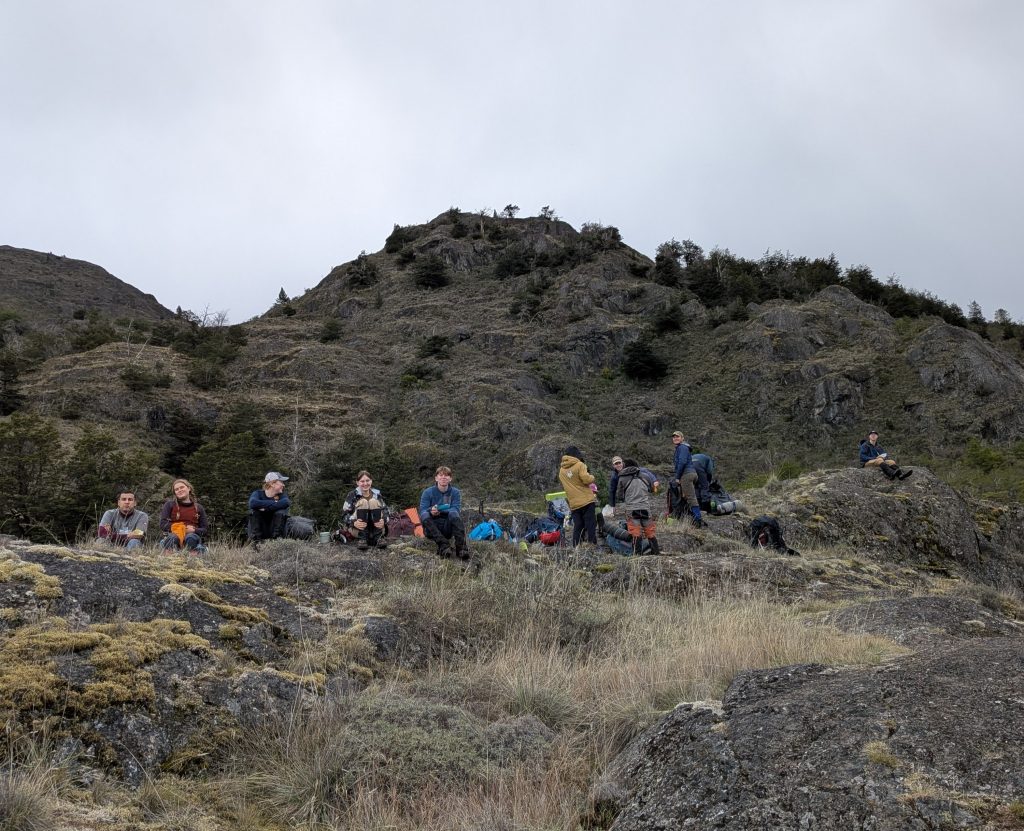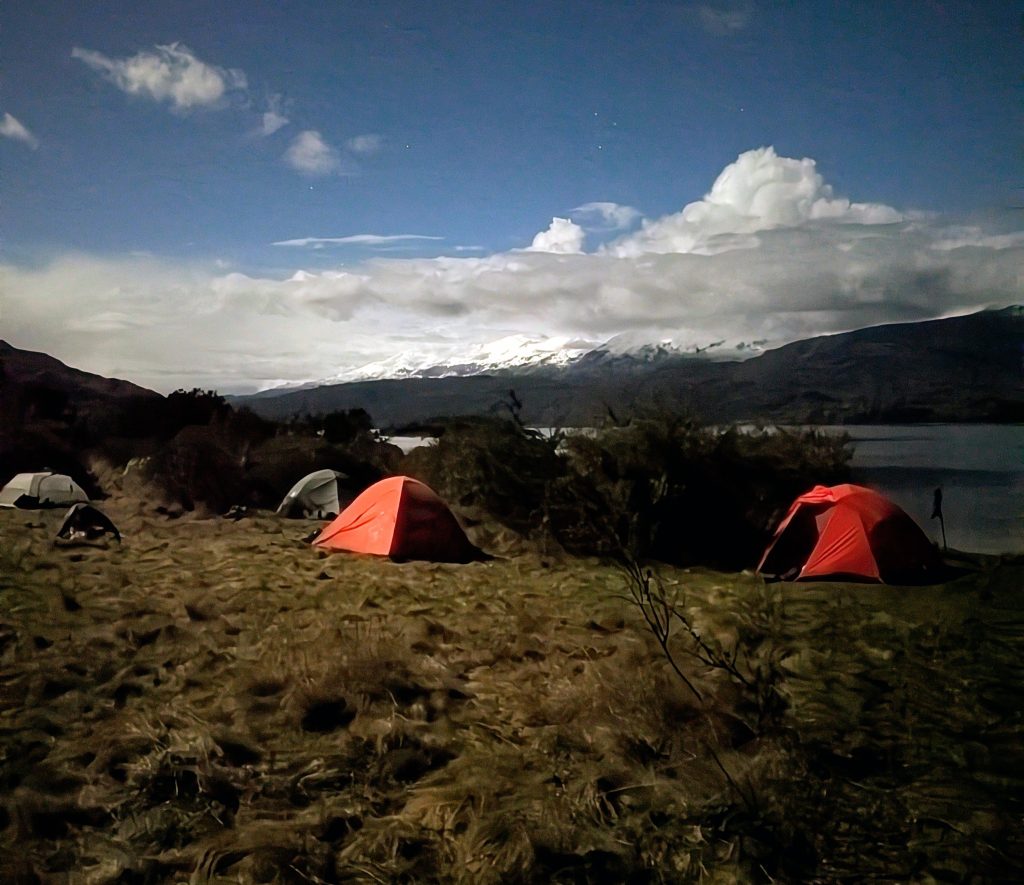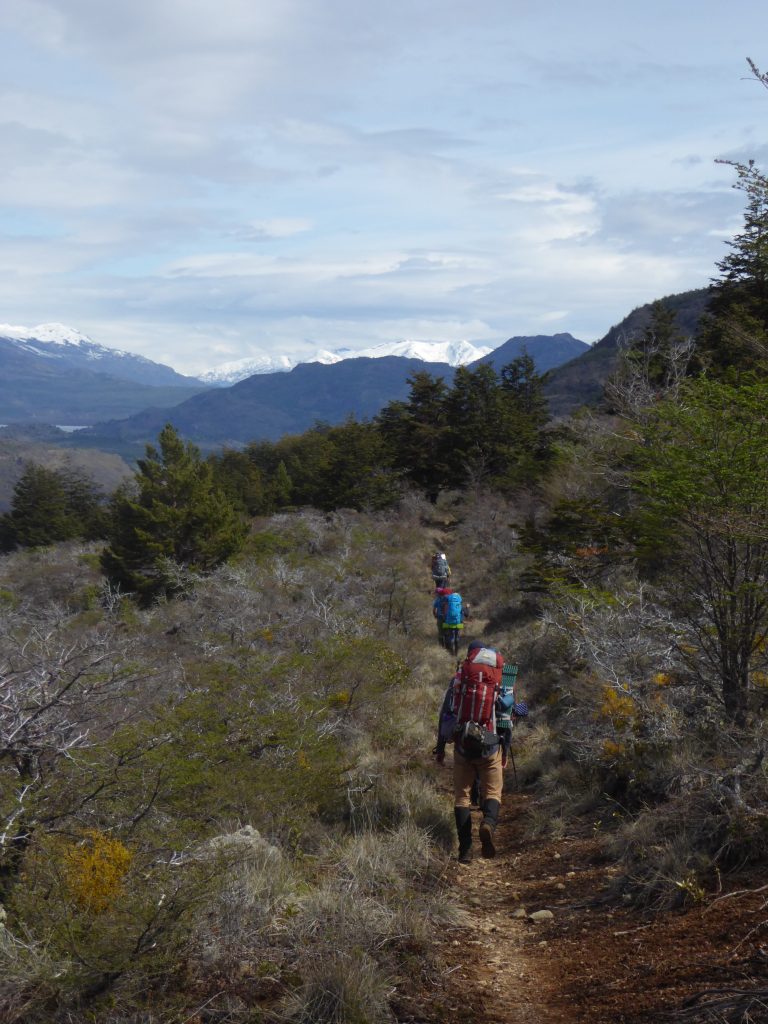By: Margaret Lowell, Carleton College
The sun was rising as I leaned over from my middle seat after an all-night flight and the sky glowed orange silhouetting the peaks. It was my first glimpse of Chile and felt like the moment the trip really began. In the Santiago airport, I was able to meet up with the group. As we all traded our names and long travel stories, I could tell everyone was exhausted but excited to be finally starting the trip we had all long awaited.
After a few days of settling into the hostel in Coyhaique, including orientation talks, beginning classes, and figuring out the chore chart, we had our first day off. A group of us decided to use that time to get outdoors on a hike nearby. After only a kilometer or two of walking, it felt like we were in a different world. The streets, houses and shops with their wood smoke and urban atmosphere fell away, and soon we were hiking up a steep trail in a forest filled with fresh snow. Despite their proximity, the city streets and the wild mountains feel worlds apart. Coming from a flat suburban area in the US, this sharp contrast between the completely uninhabited areas and the city streets felt like an exciting new experience.
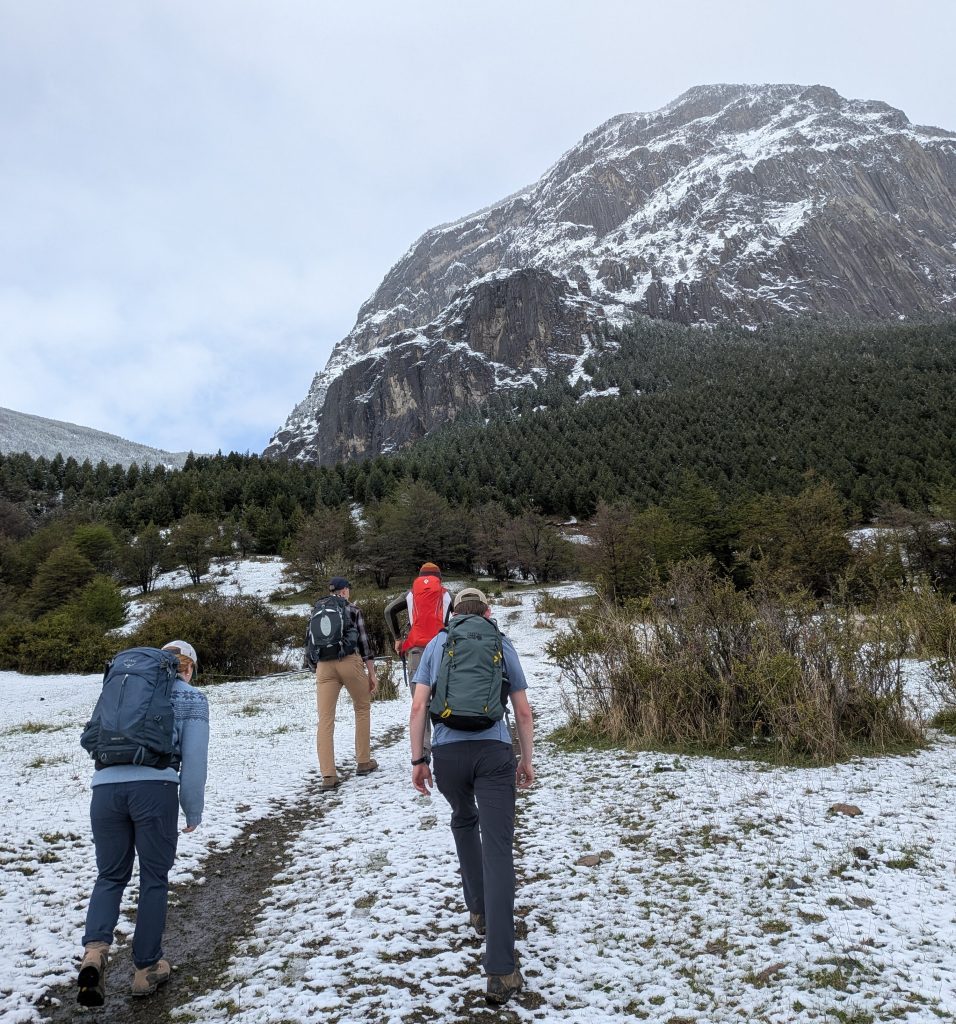
Although we had all been enjoying the comforts of being in the hostel in Coyhaique, we were looking forward to arriving at Aquasol, our base camp in Cochrane where we would continue our classes while living out of our tents. In our classes we had learned much about the topography, geology, and weather patterns that make the region generally very arid. However, upon arrival we encountered record breaking amounts of rain that immediately tested our gear and made us appreciate the warm fires that we were able to build in the quincho. I was frustrated by the rain, as I wished to be able to explore the area and take in the beautiful views around the campsite, but when the rain finally abated, I had an immense appreciation for the feeling of the bright sunshine.
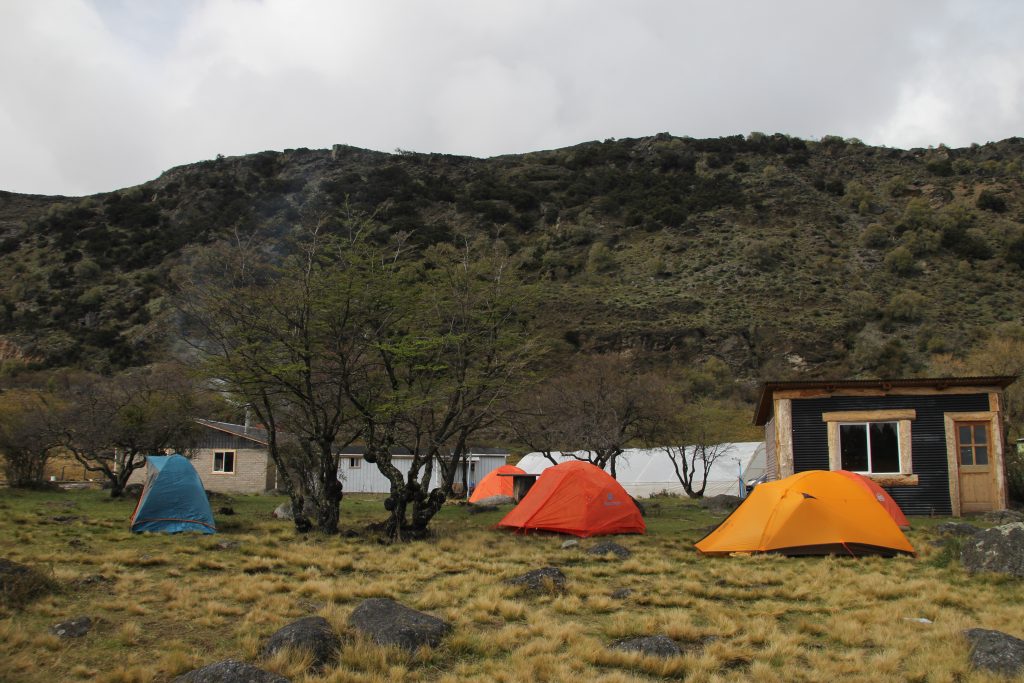
At base camp, we continued with our classes, learning about the plants, animals and fungi that we were likely to find in the region, and preparing us for our first backpacking trip. Although the days of rain had ended, when we got out on the trail, we soon found that the rain had overflowed riverbanks, washing out the trail and turning low areas into lakes. The trail took us through the Tamango section of the Patagonia National Park running along the Cochrane River and taking us to a grassy site on the shores of Lago Cochrane. Despite frequent backtracking to subvert newly created lakes and unplanned river crossings, we persevered, encouraged by the stunning views. I was constantly amazed by the new plants, mushrooms and birds that we learned about in the first weeks of classes and connecting them to field examples. On the return trip, we hiked straight up on a ridge above the river providing fantastic views and allowing us to observe and take field notes on the changing flora and fauna. The snowy mountains and crystal clear river would have been right at home on any computer screen saver.
